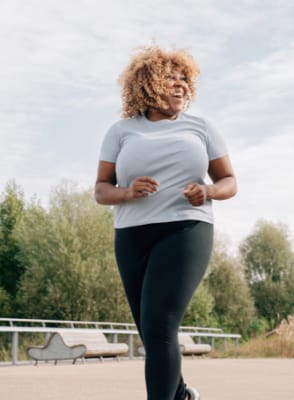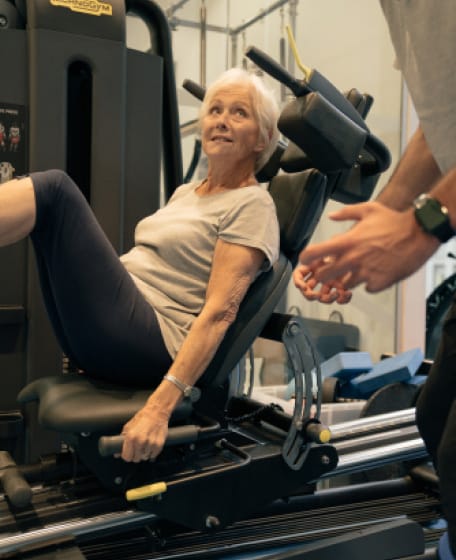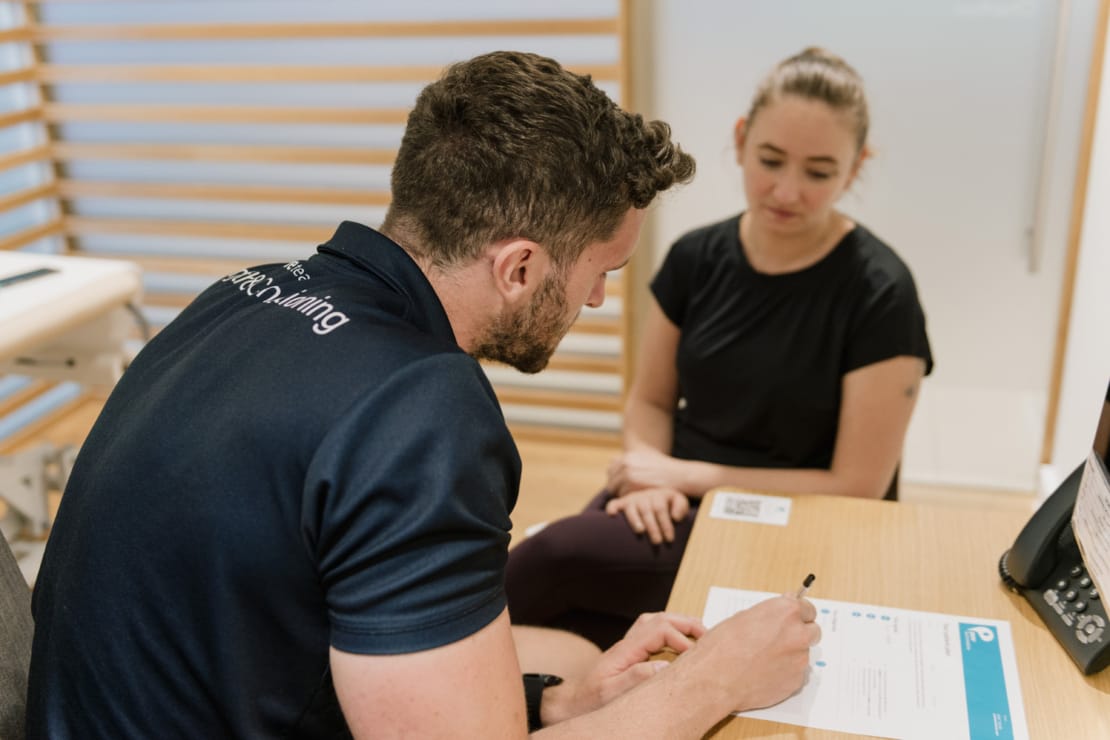Top 10 Health Benefits of Walking

Claire Small
Chief Clinical Officer & Consultant Physiotherapist
- 15 May, 2024
- Exercise
- 5 min read
Top 10 Health Benefits of Walking

Whether it’s a brief walk to the shops, a leisurely stroll around your local park or community garden or decide to join friends or family for a relaxed outing, walking remains one of the best, low-impact exercises for all ages and abilities.
With no need for additional equipment or hidden costs, adding a brisk walk to your daily routine can significantly improve your physical health and wellbeing, boost your mood, and provide a multitude of long-term benefits.
How much walking a day is good for you?
For adults aged 19 to 64 years of age, 150 minutes of weekly physical activity is advised, which can be achieved by completing a daily 30-minute brisk walk. A ‘brisk’ walk will require an average speed of 4.5mph, which can help you to burn a round 200 calories.
If you are feeling more ambitious, walking five miles each day translates to roughly 10,000 steps, reducing the likelihood of future illness or injury. Studies have found that prioritising faster-paced walks over longer durations can further reduce the risk of developing long-term chronic conditions, such as cancer or heart disease.
We look at the top 10 health benefits of walking and why you should incorporate it into your routine.
1. Tone your body
Regular brisk walks can help you to reduce weight around your midsection, tone your lower body, particularly your legs and abdominal muscles, and allow you to build essential muscle mass to support your range of motion and flexibility.
2. Enhance your circulation
Staying active throughout the day will allow oxygen to be efficiently transported around your body. As a form of cardiovascular exercise, brisk walking will naturally raise your heart rate, but will lower your blood pressure, making you less susceptible to long-term illnesses.
If you regularly work from home (or are hybrid working), a walking pad may also provide ample benefits. Similar to a treadmill in both form and functionality, a walking pad is thinner, and fits easily under your desk when not in use. Its additional padding can also help support those with mobility issues and comes with a wealth of options to promote your physical wellbeing
3. Reduce the risk of chronic diseases
Walking can help those who are looking to lose weight gradually and can aid in strengthening the surrounding heart muscles. Research has found that those that walk 2,337 steps a day can lower the risk of dying from cardiovascular disease (CVD), coronary heart disease or stroke.
Additionally, a clinical study by the British Journal of Sports Medicine reveals that brisk walking was associated with a 39% lower risk of type 2 diabetes.
4. Alleviate joint pain
Keeping your joints supple will become increasingly important as you age. Brisk walking can actively strengthen the muscles supporting your joints and alleviate pain associated with common joint conditions, such as arthritis, osteoarthritis, and rheumatoid arthritis and reduce the risk of injury.
Sport & Exercise Medicine Consultant. Dr Michael Burdon:
“If an injury has been reducing your mobility or ability to walk or exercise, an early diagnosis is key. This will allow your clinician to recommend a management plan to help you to get back to your normal activity as soon as possible. You might also be recommended different treatments such as physiotherapy, depending on your injury.”
“To mitigate and manage injuries, strength training and balance exercises are advisable, with the ideal being to commit to them as part of your workout for at least two days a week. Walking is also a highly underestimated exercise but helps to reduce the risk of injury in a low-impact way by keeping your joints mobile.”
5. Strengthen your immunity
Brisk walking can help to boost the production of immune cells that strengthen your body’s defence against common infections to keep you physically fit and healthy. Starting your day with an early morning walk can help your internal body clock to keep in sync with your day and night cycle, and hormonal functions such as insulin sensitivity. This can help to curb any hunger cravings and also promote mindfulness in choosing healthier options.
Nutritionist, Clemence Cleave:
“Nearly 70% of our immune cells are located in the gut and their activity is modulated by the trillions of microbes that lives in our large intestine. Having a good gut microbiota – rich in beneficial bacteria such as lactobacillus and bifidobacteria – supports your overall immune health.”
“When we think of a healthy gut microbiota, we first think of food, and rightly so. A diet rich in plant-based foods, full of colourful vegetables and all kinds of wholegrain, with some fermented foods such as live yogurt, kefir and kimchi, and with limited amount of ultra-processed foods, plays a strong part in shaping your gut microbiota, which in turn will strengthen your immune functions.”
“Surprisingly, even moderate exercise such as walking can positively alter the gut microbiota composition. Gentle movement such as walking stimulates the secretion of health-beneficial metabolites called short-chain fatty acids. This reduces inflammation and improves the operation of the immune system. Look after your gut with regular and moderate exercise and a diet rich in a wide range of plant, and your gut will look after you!”
6. Improve your energy levels
Venturing for a brisk walk or jog will see your body move more rapidly, causing your energy levels to rise. You heart rate will also increase to enable oxygen to be carried to your muscles more rapidly. As a result, your energy levels will also rise, causing the release of endorphins, making you feel more positive and thoroughly energised throughout the day.
7. Boost your mood
By incorporating regular walks into your routine, your cortisol levels are reduced, helping you to release tension and regulate your moods. Joining friends and family during a leisurely walk, particularly during the summer months, can also significantly improve your mood and reduce feelings of stress and anxiety.
8. Promote stronger bones
As we age, it is common for bone density to gradually decline. However, regular walking can slow this decline and mitigate the future risk of osteoporosis, improving bone mineral density and the risk of bone fractures.
9. Promote brain training
As we take our first steps and learn how to walk, our ‘gait’ and way of walking is what we effectively learn and carry throughout our lifetime. However, medical professionals now use this as a valuable tool to diagnose neurodegenerative conditions, such as dementia and Alzheimer’s disease. Brisk walking can also seek to enhance episodic memory and slow the progression of cerebral conditions in older adults.
10. Improve your sleep
It is widely acknowledged that getting up to eight hours of quality sleep is essential to feel relaxed and refreshed at the start of each day. A brisk walk has been found to contribute to better sleep quality and reduce common sleep disturbances, such as insomnia and sleep apnoea.
Do I need any special equipment when walking?
It’s important to invest in a quality pair of sturdy walking shoes to reduce the risk of injuries to your legs, ankles, or feet. If you live in an area with varied terrain, incline walking can help to strengthen the muscles in your calves, glutes, and hamstrings, while walking poles offer additional support, particularly for those with joint conditions, Meanwhile, for those who wish to strengthen their core or abdominal muscles, wearing a weighted vest can help to further improve your bone density, balance, coordination, and overall physical fitness.
Specialist Sports Podiatrist, Alex Townsend:
“The power of your footwear should not be underestimated! Having sport specific footwear, such as shoes with specific tread or ankle support for trails or uneven terrain, can make incredible difference to your performance and the benefits your chosen exercise has on your body”.
“Ensuring appropriate shoe fit is essential for your musculoskeletal wellbeing, and also avoids unnecessary friction leading to blisters or painful conditions such as toenail bruising. Ensuring you are equipped with the right kit for your chosen activity will help avoid unnecessary injury and discomfort that could derail you from your fitness goals.”

Advice
Over the last 20+ years our experts have helped more than 100,000 patients, but we don’t stop there. We also like to share our knowledge and insight to help people lead healthier lives, and here you will find our extensive library of advice on a variety of topics to help you do the same.
OUR ADVICE HUBS See all Advice Hubs

